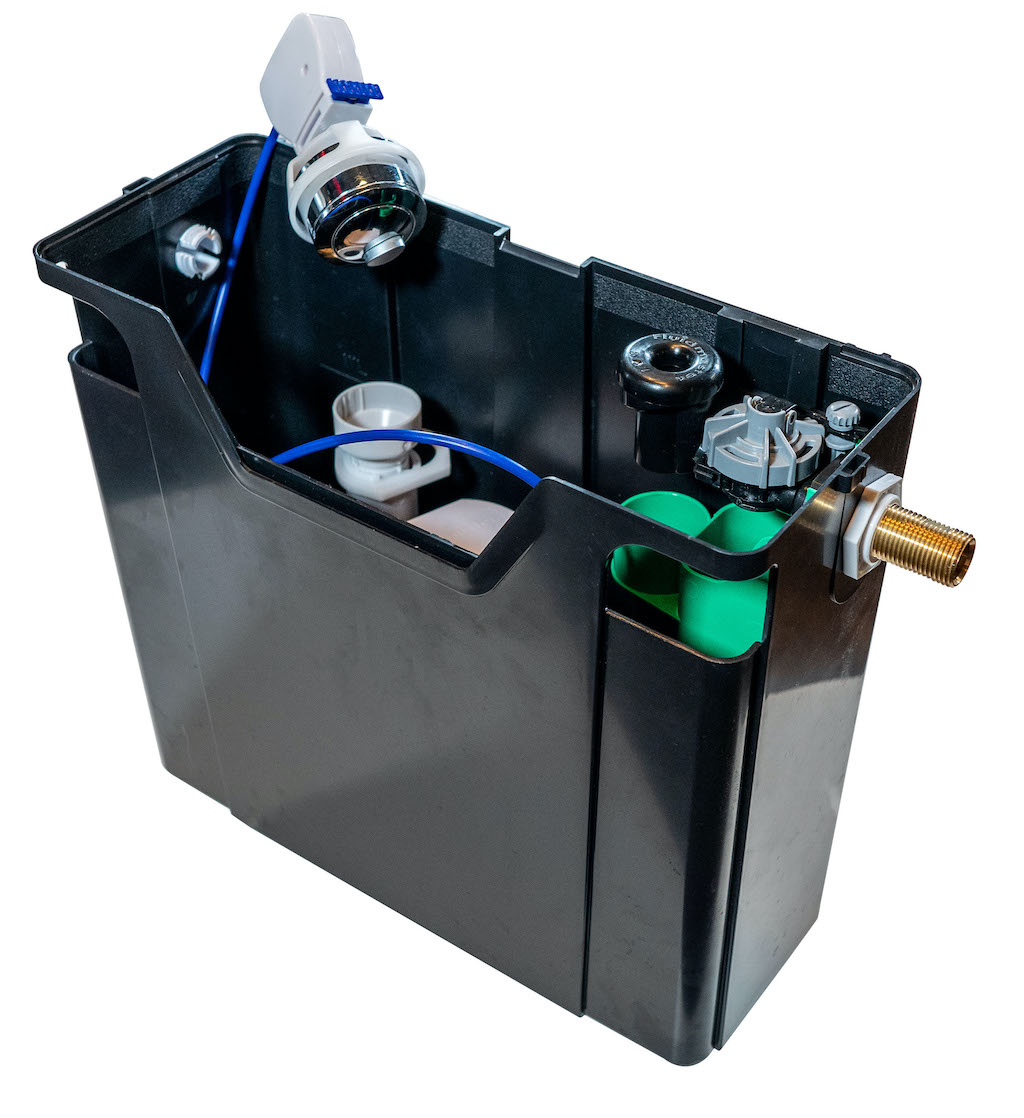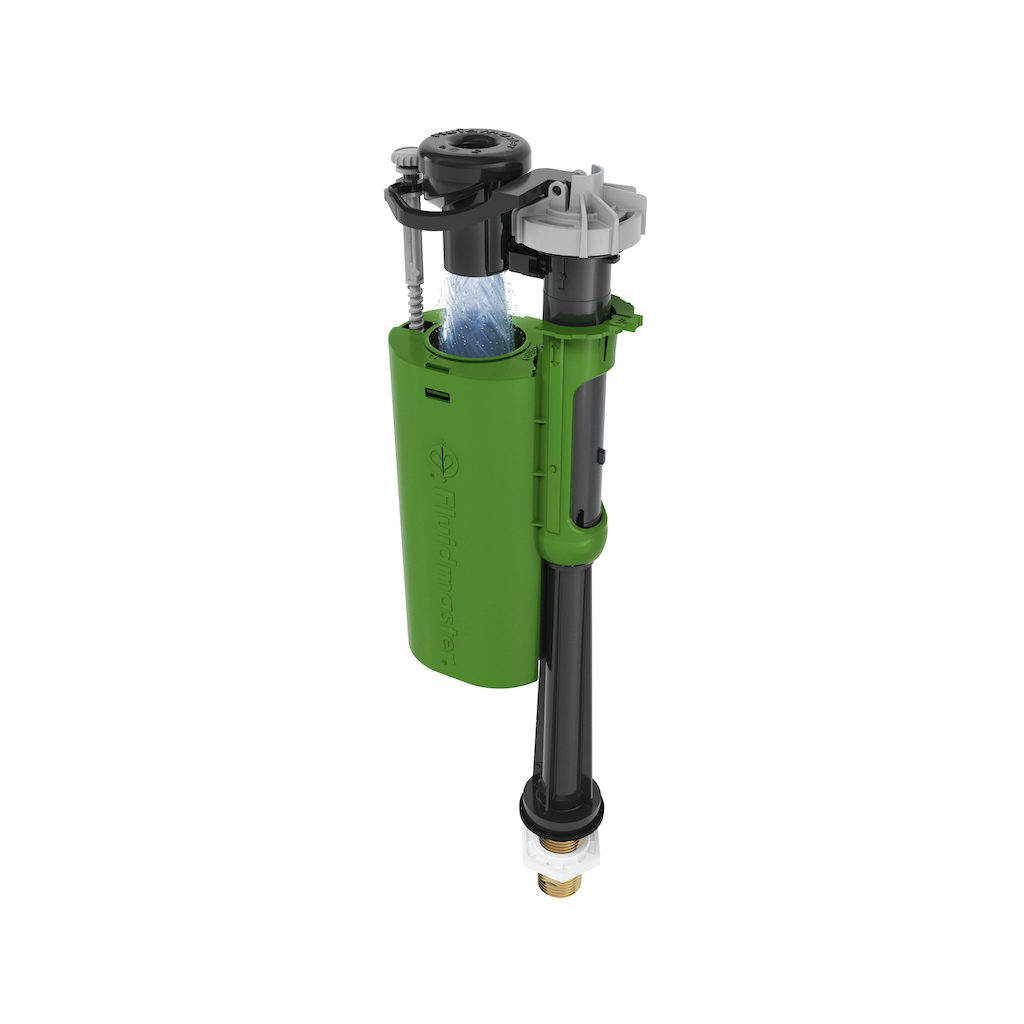
 It’s often overlooked that water conservation, in all its forms, can create a significant reduction in the use of power both within the home and via the mechanisms used throughout the supply process. Adrian Hibbert, Commercial & Specification Manager at Fluidmaster UK, discusses substantial options for water saving through more efficient flushing and filling mechanisms.
It’s often overlooked that water conservation, in all its forms, can create a significant reduction in the use of power both within the home and via the mechanisms used throughout the supply process. Adrian Hibbert, Commercial & Specification Manager at Fluidmaster UK, discusses substantial options for water saving through more efficient flushing and filling mechanisms.
‘There are 19 privately owned water and wastewater or water-only utility companies in England and Wales that reportedly consume around 2-3% of the overall national energy supply. This makes the sector the fourth most energy intensive industry.’
For that reason, creating efficiencies for water-related energy use across homes (and non-residential buildings) throughout the country will have substantial benefits in terms of reducing CO2 emissions and in turn reducing bills for individual residents.
Water consumption per capita has risen exponentially in modern times, with UK residents now using over 142 litres of water per day each, according to findings from the Energy Saving Trust. Toilets are the second biggest water user in the home (second only to showers).
Approximately 30% of total water used in a home is used to flush the toilet. This is the same high-quality drinking water, which we use throughout the rest of the home.
Reducing water use
Whilst these increases in water consumption are putting a strain on our water resources and our purses, there are small changes that can be made by specifiers, facilities management companies and manufacturers to considerably reduce water use with very little effort.
One such option is to consider the recently released Fluidmaster AirGap 6000 water saving toilet cistern fill valve, which has been designed to offer substantial water savings with every single flush. By only commencing the filling process, when the toilet cistern is empty, savings of 1 litre per flush can be made with every single use of the toilet. Considering that the average person flushes the toilet five times per day, and that the average UK household occupancy is 2.5 people; this equates to a potential reduction in water consumption by over 4,500 litres per annum in an average UK household from the installation of just one water saving AirGap.
When this is coupled with the opportunities to further reduce toilet water consumption, through dual-flush options like the Fluidmaster Ultra Dual Flush Syphon, it’s clear to see that simple swaps within a toilet cistern arrangement can make a huge difference.
As an environmentally conscious UK manufacturer, we feel a huge responsibility to reinforce these simple water saving messages, which offer eco-friendly and money saving options across the board.

Green Homes Grant
On 8th July 2020, the Chancellor announced a £2bn Green Homes Grant scheme to upgrade homes across England. Under this, £500m funding will be delivered through local authorities, to improve the energy efficiency of low-income households. Local authorities can bid for funding under this scheme to improve the energy efficiency of low-income households in their area.
As a UK manufacturer, we feel it is vital to reinforce the benefits of the installation of bathroom water-saving devices. With many new-build properties containing two or three toilets (if not more), the impact of water-saving toilet fill and flush technology could be hugely significant. As part of a sustainable scheme, the installation of such technology can also contribute towards achieving BREEAM ratings.
For the environmentally conscious specifier, there are significant benefits too, to sourcing products from a UK manufacturer like Fluidmaster. Firstly, in the reliability and quality of the products on offer, which are all subject to appropriate compliance testing, certification and registration with applicable industry schemes.
Water saving toilet technology from both a fill and flush perspective is certainly an area that can offer a fast and simple solution to effectively reducing water consumption in social housing and public sector buildings. When installed in conjunction with other widely available water saving measures and initiatives, it is possible that coming years may even see domestic water consumption on the decline.








